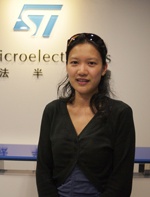Suppliers of light-emitting diode (LED) driver ICs are actively entering the dimmable LED lighting market. Except for dimmable LED lighting systems, the cost challenge of dimmable LED lighting systems is also intensifying, so chipmakers are working hard to develop software and hardware functions that support temperature compensation, drivers, programmable registers (Register), etc. Highly integrated dimming solution to help LED lighting system manufacturers reduce the overall bill of materials (BOM) cost of dimming products. Dimming solution crazy integration LED driver IC factory fight price reduction Girish Ramesh, senior product marketing manager at Atmel, said that in view of the rising demand for dimming driver ICs for LED lighting applications such as general lighting, residential lighting, commercial lighting, architectural lighting and scene lighting, the company has recently Introduced a highly integrated solution that combines software and hardware functions such as temperature compensation, drivers, and programmable registers. It is estimated that compared with competitors ’products, based on the rated power of different fixtures, it can be used by LED lighting system vendors. Save BOM cost of 0.5? 1 USD. Compared with the unit price of non-dimming LED driver ICs, which has fallen below US $ 0.4, the selling price of dimmable LED driver ICs is still higher than US $ 1. However, under the initiative of various LED driver IC manufacturers to reduce costs, the unit price of dimmable LED driver ICs in 2013 will be expected to fall below $ 1. It is understood that Atmel's latest highly dimmable LED driver IC highly integrated solution will eliminate the microcontroller (MCU) responsible for temperature compensation and the driver function through built-in temperature compensation and driver software. Power diodes, inductors and output capacitor components. In addition, the programmable scratchpad can easily control and monitor the fault detection system. Not only Atmel, Texas Instruments (TI) also recently launched a highly integrated dimmable LED driver IC solution, which can reduce the number of components and product size, applied to offline AC-DC LED lighting, tube Light (Down Light) and E14, GU10, A19, PAR20 / 30/38, MR16 and AR111 bulbs. The company uses a simple hysteresis input current control scheme to eliminate complex loop compensation and is highly compatible with transformers; and integrates active low-side (RecTIfier) ​​input rectifiers to improve efficiency while simplifying design and reducing BOM cost. Benefiting from LED driver IC manufacturers' efforts to promote higher integration, the price difference between LED dimming driver ICs and non-dimming solutions has been greatly reduced, which is expected to drive the market share of LED dimming driver ICs to rise sharply in 2013. The price difference between non-dimming solutions and LED dimming driver ICs is increasing In addition to improving the degree of integration, LED lighting driver IC manufacturers also use simplified printed circuit board (PCB) design to achieve price reduction. At present, the unit price of dimmable LED lighting driver ICs has fallen sharply, and the price difference with non-dimming driver solutions has also rapidly narrowed to below US $ 0.30, which is expected to attract LED lighting fixtures and bulb manufacturers to adopt a large number. Figure 1 NXP Semiconductors Greater China Lighting Products Marketing Director Wang Yongbin said that the company will launch two more dimmable LED lighting driver ICs in 2013 to expand its market share. NXP Semiconductors Greater China Lighting Marketing Director Wang Yongbin (Figure 1) said that LED driver IC companies can reduce the unit price of LED dimming driver ICs by approximately 1 by reducing circuit design complexity and integrating more external components The price of the US dollar dropped to 0.45? 0.6 US dollars, compared with the price of non-dimming LED driver ICs of about 0.3-0.4 US dollars, the price difference has been reduced to 0.05? 0.3 US dollars, from more than three times in the past, to less than double . Current dimming and non-dimming lighting solutions account for 30% and 70% of global LED lighting driver IC shipments, respectively, and the annual growth rate of both shipments reaches 100%. Wang Yongbin expects that the price of LED dimming driver ICs will drop sharply, which will stimulate the increase in shipments and output value of dimming LED lighting driver ICs in 2013. In the past, the unit price of LED dimming driver ICs was relatively high, so the main applications were limited to commercial lighting areas such as shop windows, hotels, bars, etc., which are not highly price sensitive; however, under the significant narrowing of the price difference between LED dimming driver ICs, plus energy saving Awareness is on the rise, and the end consumer's acceptance of the dimmable lighting system is expected to increase greatly, which will drive the penetration rate of the LED dimming driver IC market. Dimming LED lighting systems will save more power than non-dimming lighting systems and gradually gain market favor. Wang Yongbin revealed that aiming at the business opportunities of dimmable LED lighting applications, NXP is expected to launch dimmable LED lighting driver ICs for MR16 bulbs in the second quarter of this year, which allows LED lighting system developers to use only 20 to 30 components. It can overcome the challenge that the MR16 bulb cannot be directly connected to the main power supply of 220 volts (V); compared with the solution that competitors must use more than one hundred, the development cost can be greatly reduced. It is also worth noting that, compared with traditional triac dimming (TRIAC) dimming, Smart LighTIng, which is more power efficient, is expected to become the next stage of exciting dimmable LED driver IC Vendors are an important driver of revenue growth, so LED driver IC manufacturers are aggressively grabbing the market through turnkey solutions (Turnkey SoluTIon). Strongly attack the intelligent lighting driver IC factory turnkey solution Smart lighting refers to a lighting system that combines wireless technology, sensors, driver ICs, and light sources to control according to the lighting area, effective daylight, and the time to turn on and off lights every day, in order to achieve significant energy and cost savings. With the advantages of energy saving, environmental protection, safety and more flexible management, smart lighting is rapidly increasing market visibility. In particular, compared with traditional light sources such as fluorescent lamps, compact fluorescent lamps, and high-intensity gas discharge lamps, LED light sources have more energy-saving characteristics, so they have become the primary light source technology option for smart lighting. Facing the rapid expansion of the smart lighting market, NXP, STMicroelectronics (ST) and other LED driver IC manufacturers are committed to assisting LED lighting system customers to reduce development thresholds and BOM costs through a complete turnkey solution, and actively seize wisdom Lighting market opportunities. Figure 2 Wu Yujun, marketing manager of STMicroelectronics, pointed out that smart lighting with more energy-saving benefits will be the general trend, and the company will actively seize market opportunities through new solutions. Wu Yujun (Figure 2), marketing manager of STMicroelectronics (Figure 2), said that compared with the traditional TRIAC analog dimming, digital smart lighting has more power-saving benefits and is attracting many LED lighting system vendors to rush into product development. However, smart lighting has built-in wireless local area network (Wi-Fi), ZigBee, power line communication (PLC), digital addressable lighting interface (DALI) and other networking technologies, as well as sensors that support functions such as humidity and air pressure. The corresponding application software matching is needed, which will become a great design checkpoint for LED lighting system vendors lacking software development capabilities. Wang Yongbin pointed out that, unlike the LED driver IC manufacturers that provide a single chip solution, the company introduced a communication protocol (Protocol), gateway, gateway, silicon intellectual property (IP) / chip, cloud Turnkey solutions for service interfaces, application software, etc., where application software can be freely adjusted according to the needs of lighting system customers to highlight product differentiation. Wang Yongbin further emphasized that there are currently chip and networking technology communication protocol providers in the field of smart lighting. Therefore, lighting system customers must explore and integrate the chip and networking technology communication protocols from different suppliers. The company's advantage is that it can provide customers with a turnkey solution with chip and networking technology communication protocols, which helps customers accelerate the development of smart lighting products. In addition, NXP has developed a wireless MCU for smart lighting, and a development kit that simplifies the application of ZigBee, JenNet-IP, and IEEE 802.15.4 networking technologies. It covers the hardware and software required for the design, such as wireless modules, plug-ins Expansion board, universal serial bus (USB) connector, remote control, Internet router with enhanced OpenWRT firmware and a complete software design kit. Not only NXP, STMicroelectronics has also provided a turnkey solution for smart lighting system customers with chip and networking technology communication protocols, and is compatible with Wi-Fi, ZigBee, PLC, DALI and other wireless and wired communications. In addition, in response to the diversified power conversion and control topologies of different smart lighting systems in the future, the company has published programmable digital controllers that can simplify traditional power conversion and topology design; while improving light quality and light perception through dedicated algorithms, and Improve energy efficiency through power conversion algorithms. Driven by the trend of energy saving and carbon reduction, not only the demand for traditional TRIAC analog dimming is heating up, but also the application prospect of digital smart lighting dimming is also exciting. As a result, LED driver IC manufacturers have rushed to launch high-integration and turnkey solutions to strengthen the cost-effective competitiveness in order to grab the market. The Touch Screen Monitor allows the user to operate the host computer simply by touching the icon or text on the computer display screen with his finger, thus getting rid of keyboard and mouse operations and making the human-computer interaction more straightforward. Mainly used in information inquiry in public halls, leading offices, electronic games, song and order, multimedia teaching, air ticket / train ticket pre-sale, etc. The products are mainly divided into three types: capacitive touch screen, resistive touch screen and surface acoustic wave touch screen. industrial touch monitor,industrial touch screen monitors,industrial grade touch screen monitor,industrial touch display,industrial display monitors,industrial touch screen displays Shenzhen Hengstar Technology Co., Ltd. , https://www.angeltondal.com

